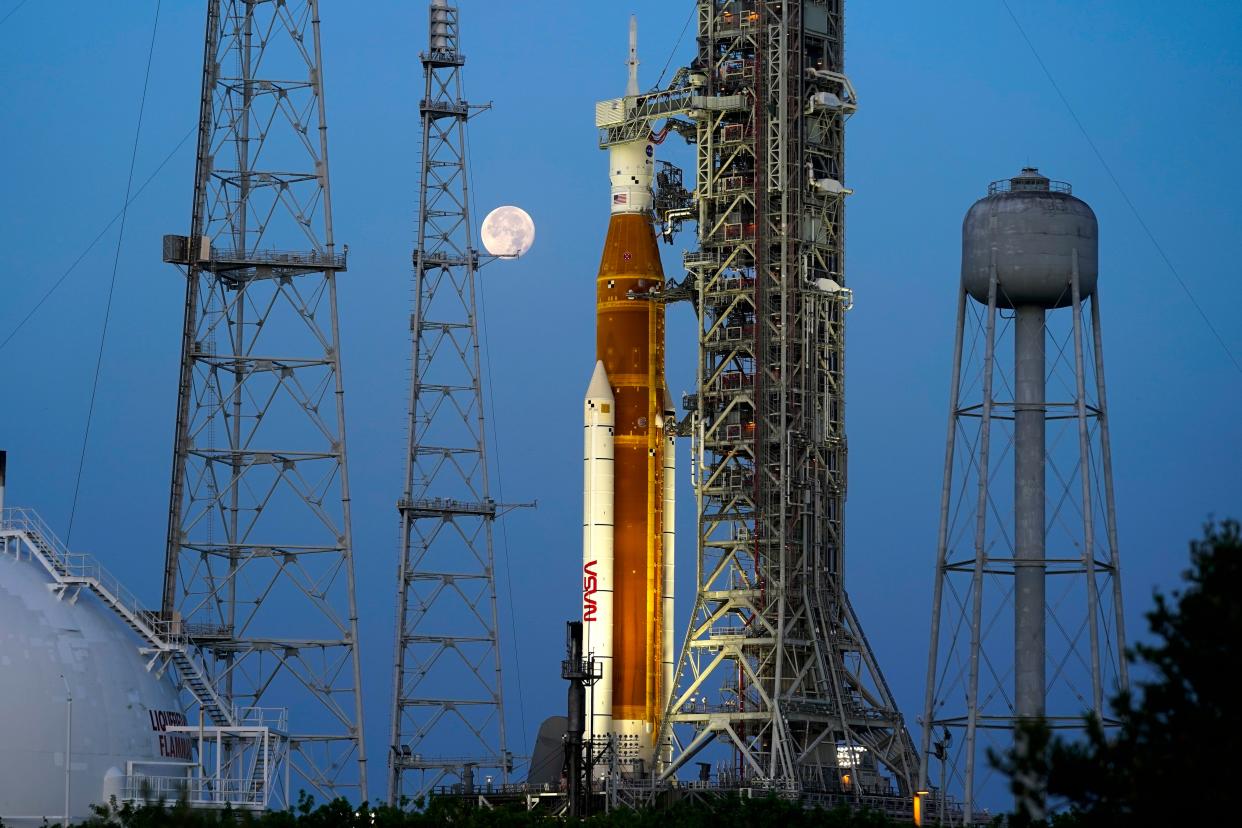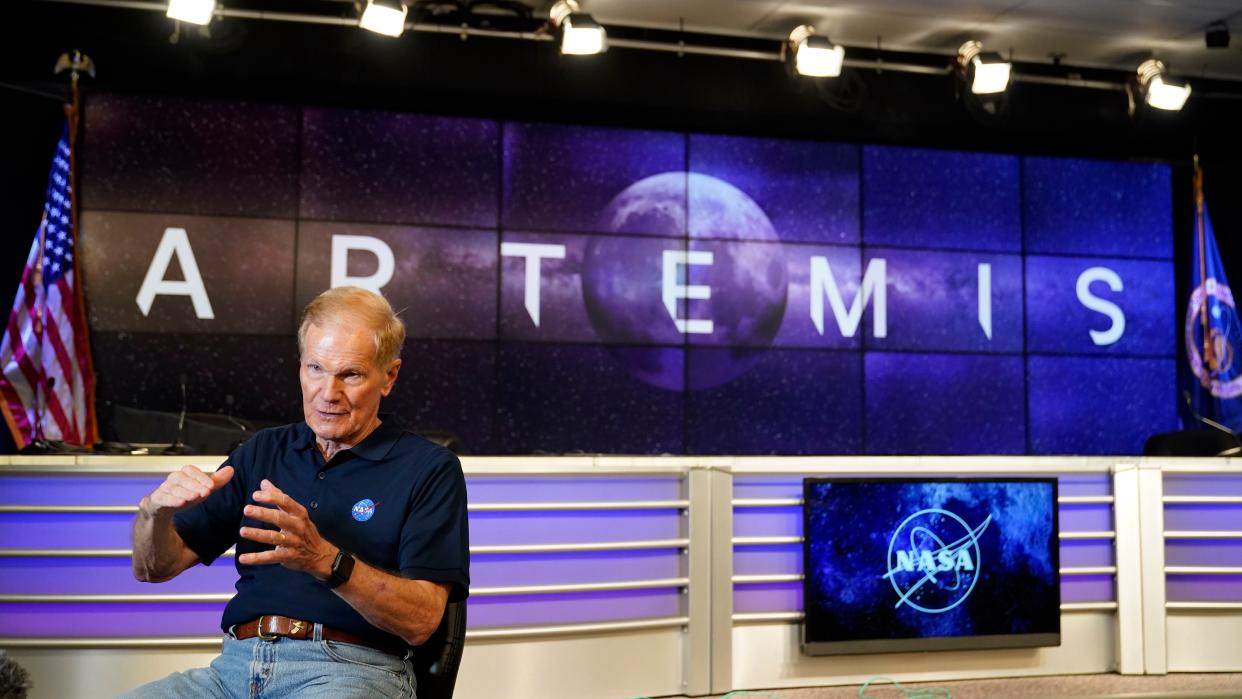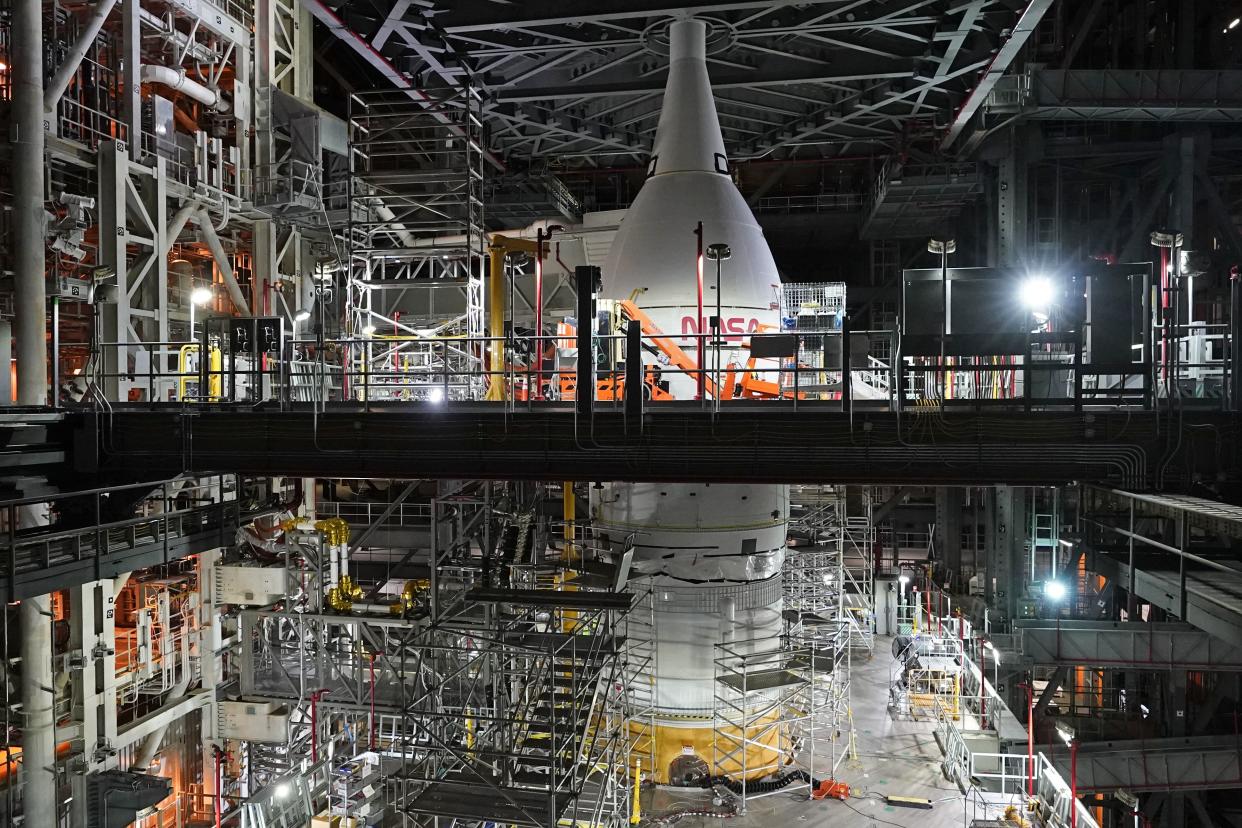NASA set for first moon mission in 50 years
Hollywood loves a remake — and so does NASA.
Fifty years after the last human trip to the moon, NASA will launch a mission Monday that is designed to kickstart the next generation of lunar exploration.

The moon sets behind the NASA Artemis rocket at Kennedy Space Center on June 15. (John Raoux/)
The mission, dubbed Artemis 1, won’t involve any astronauts or any contact with the moon’s surface. It will send a space capsule carrying three dummies into an extended lunar orbit in preparation for future missions to the surface and possible flights to Mars.
Like many construction projects, the moon mission has been delayed for years and is hopelessly over budget, but it could nonetheless prove to be NASA’s greatest achievement since 1972′s Apollo 17 last put humans on the moon.
On NASA’s current schedule, astronauts wouldn’t orbit the moon until 2024 and wouldn’t set foot on the surface until 2025. The first step to getting them there is Monday’s test mission from Kennedy Space Center in Cape Canaveral, Fla.
“We’re going to stress it and test it,” NASA leader Bill Nelson said Wednesday. “We’re going to make it do things that we would never do with a crew on it in order to try to make it as safe as possible.”

Bill Nelson explains the Artemis 1 mission during an interview Wednesday. (John Raoux/)
The capsule will ride on a Space Launch System (SLS) rocket that is shorter (322 feet) and slimmer than the Saturn V rockets used in the Apollo program. Nelson acknowledged that the name could use some work; he said NASA’s discussing a better one.
The SLS rocket will be boosted by strapped-on, refashioned space shuttle engines on the bottom. They will peel away after two minutes of flight.
Sitting on the SLS will be NASA’s Orion space capsule. The new capsule is bigger than the Apollo capsules, with room for four astronauts instead of just three. While the SLS has never been used before, the Orion capsule took two laps around Earth in 2014.
But this will be a journey unlike the capsule has seen before. Once Orion arrives at the moon, it will begin a distant orbit that, at its farthest point, will put it 280,000 miles away from Earth. That’s farther than any of the Apollo missions reached.
The biggest test for Orion will come at the end of the mission, when it returns to Earth’s atmosphere at an estimated speed of 25,000 mph. That will be faster than any of the Apollo missions reentered, and is meant to prepare NASA for faster reentries, potentially from Mars.
But that all assumes Artemis 1 will go according to plan. This single mission has already cost $4 billion; the Artemis program as a whole has a $93 billion price tag dating back almost a decade.

A section of the Artemis rocket with the Orion space capsule is seen inside the Vehicle Assembly Building at the Kennedy Space Center on Nov. 5, 2021, in Cape Canaveral, Fla. (John Raoux/)
The program is named for Apollo’s mythological twin sister and two of its main goals will be landing the first woman and the first person of color on the moon. Nelson said he would announce the first Artemis crews once Orion returns.
“It is supposed to be the first step in a sustained program of human exploration of the moon, Mars and beyond,” said John Logsdon, retired founder of George Washington University’s Space Policy Institute. “Will the United States have the will to push forward in the face of a major malfunction?”
Though the Apollo missions eventually became a world-changing success, the first mission ended when a cabin fire killed all three crew members preparing for a launch test.
Three Apollo veterans will be in attendance for the launch, according to NASA. Apollo 7′s Walter Cunningham, Apollo 10′s Tom Stafford and Apollo 17′s Harrison Schmitt will visit Kennedy Space Center on Monday. Schmitt is the second-to-last man to set foot on the moon.
With News Wire Services
